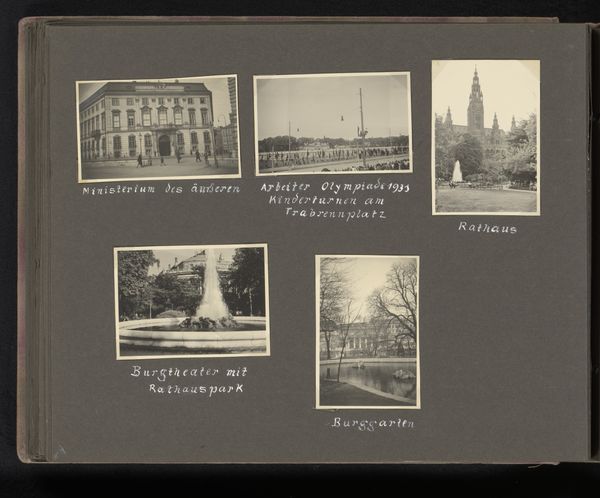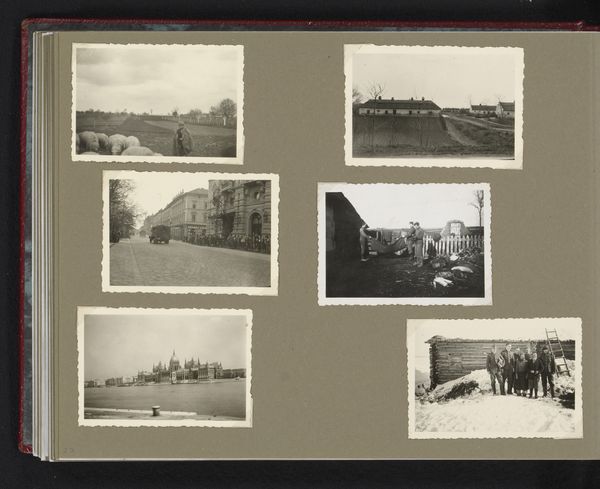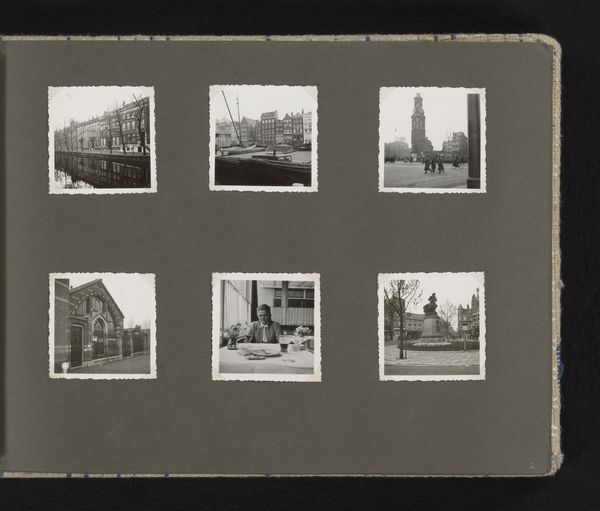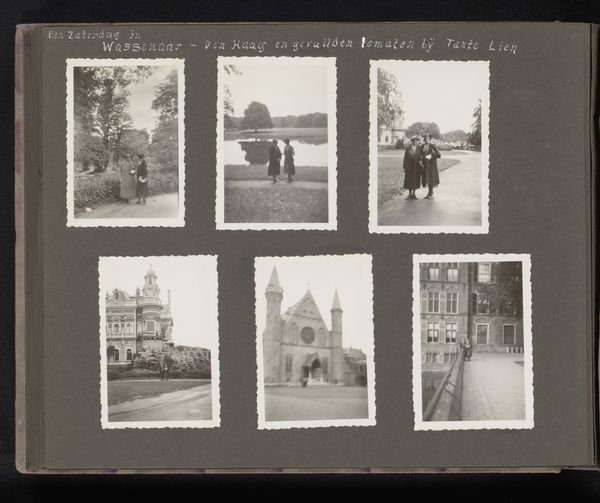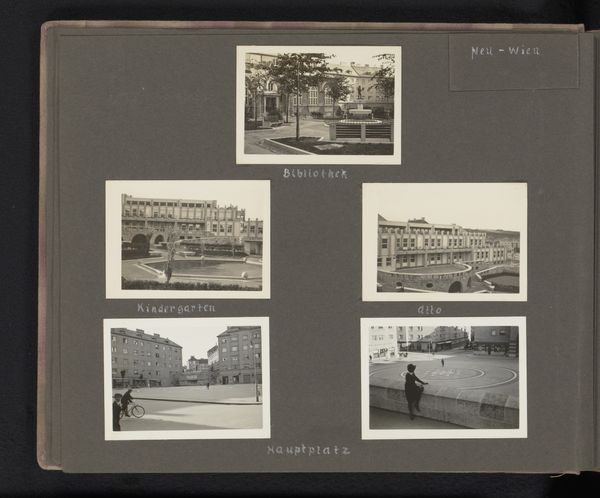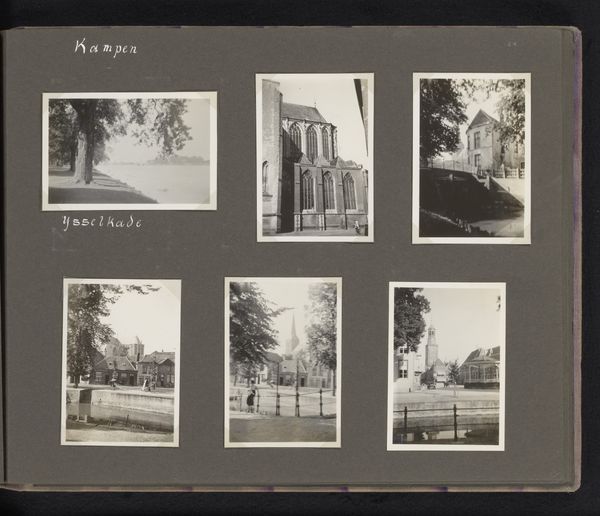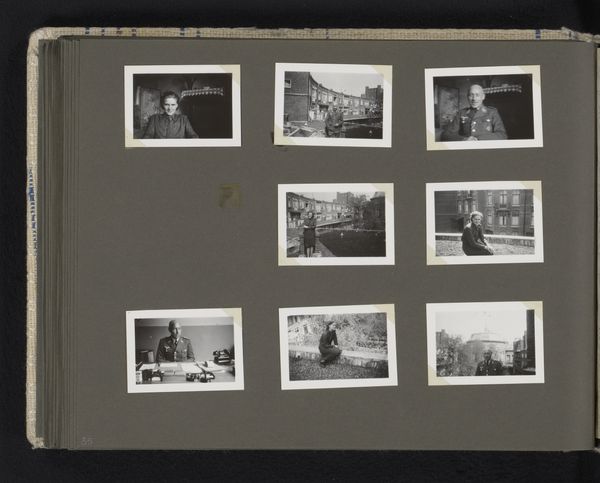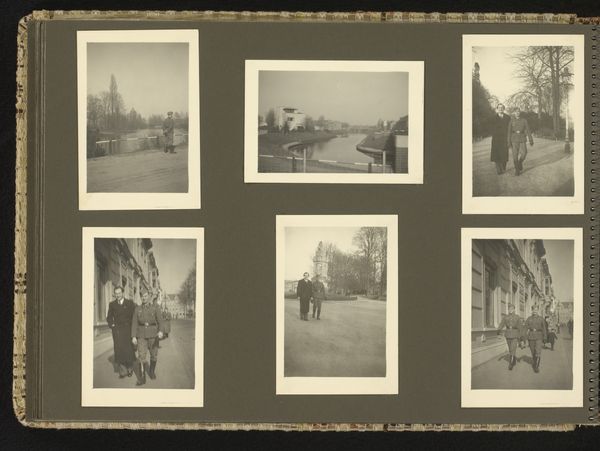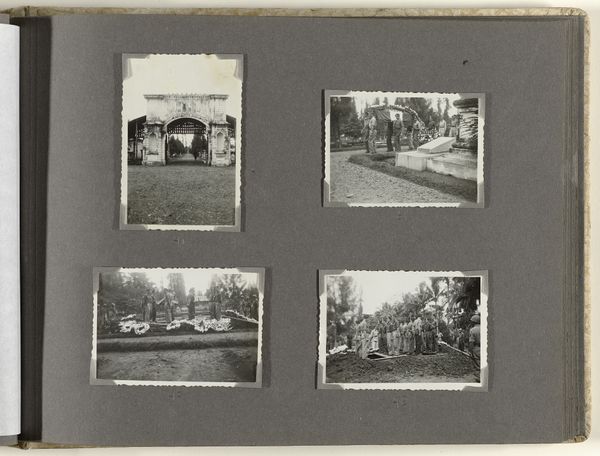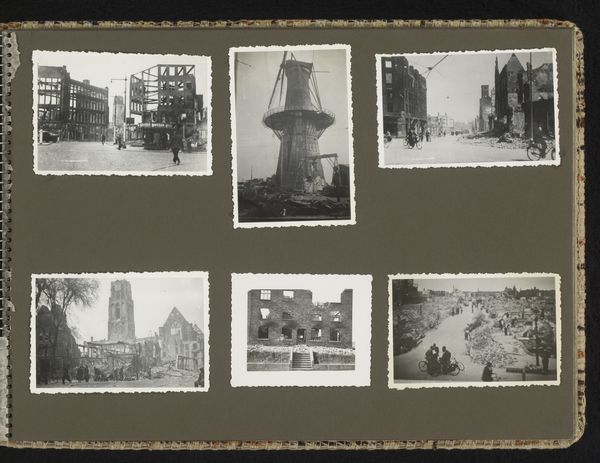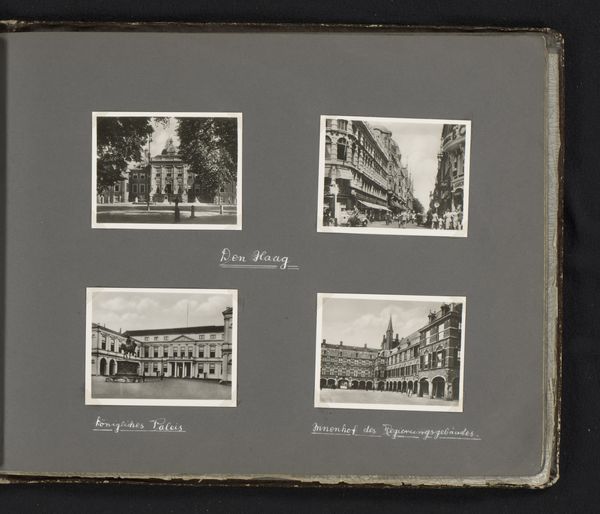
photography
#
landscape
#
street-photography
#
photography
#
cityscape
Dimensions: height 221 mm, width 320 mm
Copyright: Rijks Museum: Open Domain
Curator: This artwork is titled “Echtpaar Berti Hoppe en Herman Besselaar op vakantie,” created between 1936 and 1939. It appears to be a photo album page, comprised of five individual gelatin silver prints arranged on a dark grey surface. What are your initial thoughts? Editor: Immediately, the disparate subjects jump out at me: cityscapes, landscapes, what seems like everyday street scenes, waterfalls. I'm struck by how it juxtaposes urban life with natural escapes, probably revealing leisure in a changing social and environmental landscape. Curator: From a formal perspective, observe the varied compositions in these photographic prints. We have classical urban structures, the sharp lines of buildings, contrasted by the more fluid, organic shapes of nature. The gelatin silver process gives each print a certain tonal range, a symphony of greys, if you will, bound by this tooth-edged white border. Editor: It begs the question: who decided on this layout? It definitely has an element of imposed order on something quite personal. Who were Berti Hoppe and Herman Besselaar, and what social and economic status did they occupy during these tumultuous years preceding WWII? Their vacation snaps provide invaluable clues about lived experiences and priorities during an era marked by looming global conflicts. Curator: I concur. The compositional layout invites analysis through the arrangement and interplay between various pictorial components. Notice, too, the interplay of light and shadow, effectively employed across the different prints. Consider, for example, the rendering of light upon stone and water in comparison to brick and concrete. Editor: It makes you consider travel and privilege during this period. Think about access— who got to document their vacations with photography? Also, I can't help but think about the people missing from this image: whose labor constructed the urban scenes, whose access to the countryside was limited or denied? These choices speak to broader power structures embedded in photographic practice and leisure culture. Curator: Your points introduce welcome historical considerations. However, examining the formal language allows a deeper engagement with the intrinsic value and inherent qualities that make the art distinct and compelling in itself. Editor: While I respect an examination of form, locating those elements within wider narratives provides context and complexity that is really relevant when exploring personal archives that, to some extent, end up becoming historical records of social practice. Thanks for prompting further inspection. Curator: Likewise. Considering how these views interact opens a dialogue concerning materiality, space and time, yielding rich and unique experience for our visitors.
Comments
No comments
Be the first to comment and join the conversation on the ultimate creative platform.

